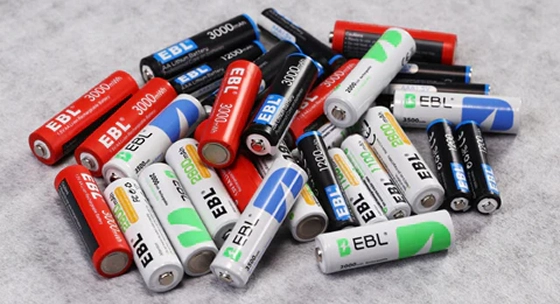How to choose between rechargeable and non-rechargeable batteries?
In daily life, we often need to use batteries to power various devices, such as remote controls, toys, mobile phones, flashlights, etc. Choosing the right type of battery is crucial to the performance and user experience of the device. Nowadays, there are two types of batteries on the market: rechargeable batteries and non-rechargeable batteries (also known as disposable batteries). So how do you choose between the two? This article will explore the characteristics of rechargeable batteries and non-rechargeable batteries in depth and help you make a wise choice.
Advantages and Disadvantages of Rechargeable Batteries
Rechargeable batteries (usually lithium batteries or nickel-metal hydride batteries) can be recharged and used multiple times, and are suitable for devices that are used frequently. The main advantages of rechargeable batteries are their environmental friendliness and long-term economic benefits.
Advantages:
- Economical: Although rechargeable batteries have a higher initial cost, they are more cost-effective than disposable batteries in the long run because they can be recharged multiple times. For example, a toy or remote control that uses rechargeable batteries can be used for many years with just one investment, while non-rechargeable batteries need to be replaced frequently.
- Environmental protection: Rechargeable batteries reduce the number of discarded batteries, thereby helping to reduce environmental pollution and meet the needs of sustainable development.
- High performance: Rechargeable batteries generally have a higher energy density and can provide a longer service life, especially today when battery technology is constantly improving.
Disadvantages:
- Higher initial cost: Although there are long-term cost savings, the initial investment in rechargeable batteries is usually more expensive than non-rechargeable batteries.
- Charging time: Rechargeable batteries take a certain amount of time to charge, which may be inconvenient for scenarios where power is urgently needed.
- Capacity decay: The capacity of rechargeable batteries will gradually decay with the increase in the number of times they are used, resulting in the need for more frequent charging.
Advantages and Disadvantages of Non-rechargeable Batteries
Non-rechargeable batteries (such as alkaline batteries, zinc-carbon batteries, etc.) are disposable batteries suitable for devices that are used occasionally or have low battery performance requirements.
Advantages:
- Convenience: Non-rechargeable batteries are easy to use and can be used directly after purchase without charging.
- Suitable for low-power devices: For devices with low power consumption (such as flashlights and remote controls), non-rechargeable batteries can provide sufficient power.
- No charging restrictions: No need to consider charging time, can be replaced at any time, especially suitable for travel or outdoor activities.
Disadvantages:
- High long-term cost: Since it can only be used once, it needs to be purchased frequently, and the cost of long-term use is significantly higher than that of rechargeable batteries.
- Environmental impact: Disposable batteries will generate a lot of waste after use, increase the environmental burden, and most non-rechargeable batteries are harmful to the environment during disposal.
- Limited performance: Non-rechargeable batteries usually have a small capacity and the power may drop rapidly during continuous discharge.
How to choose?
The key to choosing between rechargeable batteries and non-rechargeable batteries lies in the frequency of use of the device, environmental impact and economic considerations.
- Frequently used devices: If you need to use a device frequently, such as a wireless mouse, remote control, or toy, rechargeable batteries are undoubtedly a more suitable choice. It can reduce the frequency of battery replacement and is more economical for long-term use.
- Low-frequency use devices: For devices that are used occasionally, such as backup flashlights, emergency tools, etc., non-rechargeable batteries may be more convenient and you don’t have to worry about charging.
- Environmental needs: If you pay attention to environmental protection, rechargeable batteries are the best choice, which can reduce the negative impact of disposable batteries on the environment.
- Budget considerations: If the initial budget is limited, non-rechargeable batteries may be more attractive, especially if you only need to use it for a short period of time.
Rechargeable batteries and non-rechargeable batteries each have their own advantages and disadvantages. Which one to choose depends on your specific needs. If you pursue long-term economic and environmental protection, rechargeable batteries are a more suitable choice; if you need simplicity and short-term use, non-rechargeable batteries may be more convenient. Understanding the characteristics of different battery types and making reasonable choices based on your needs can better meet your electricity needs in life.










